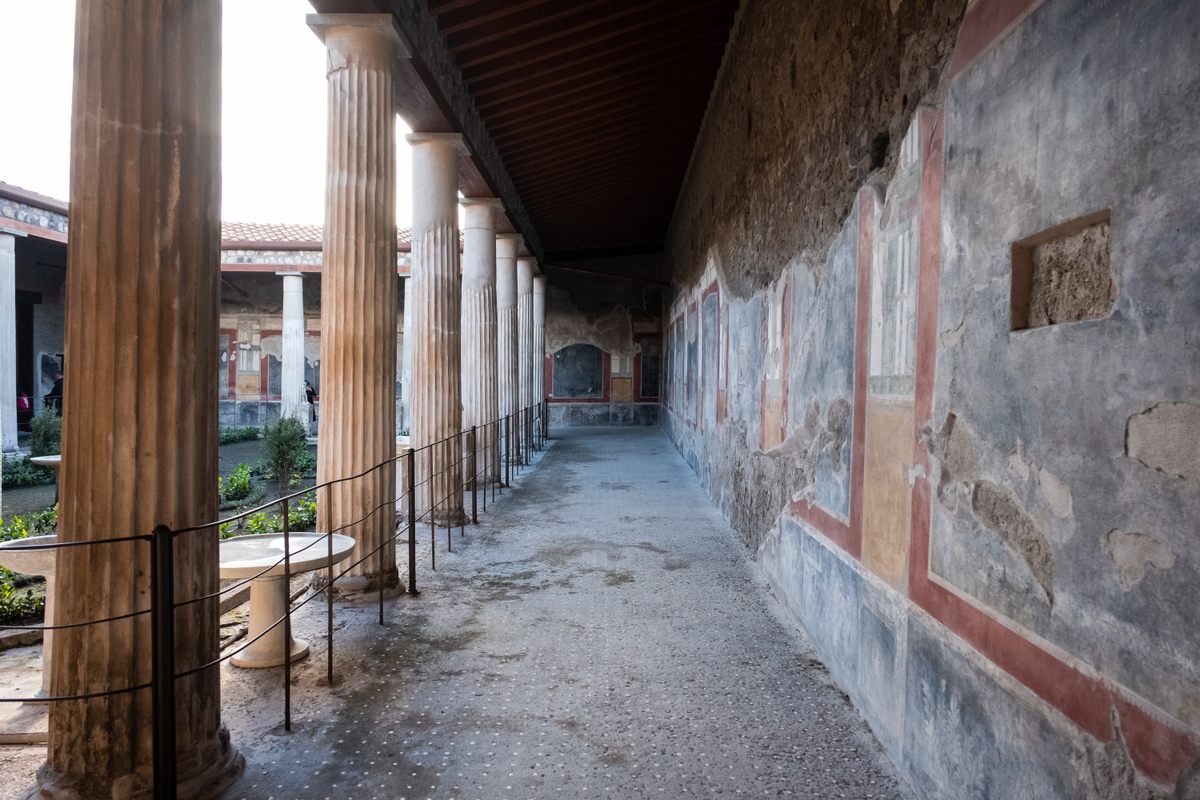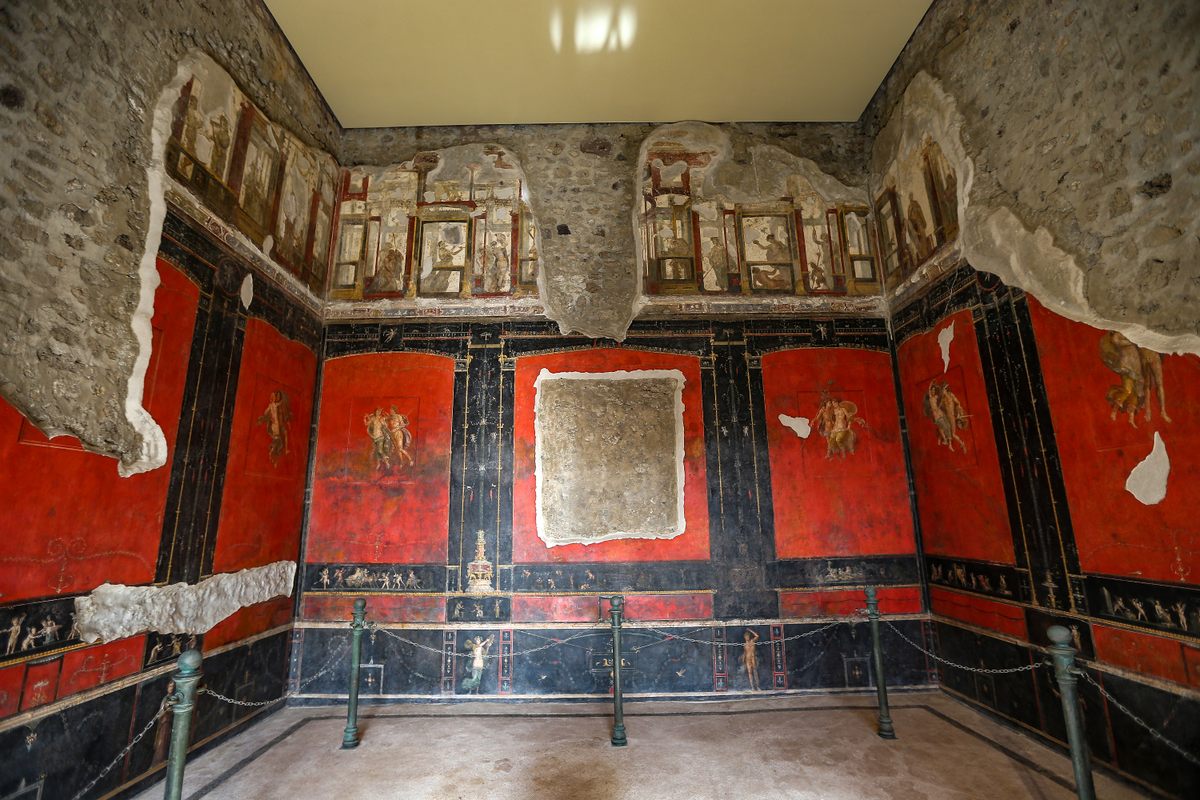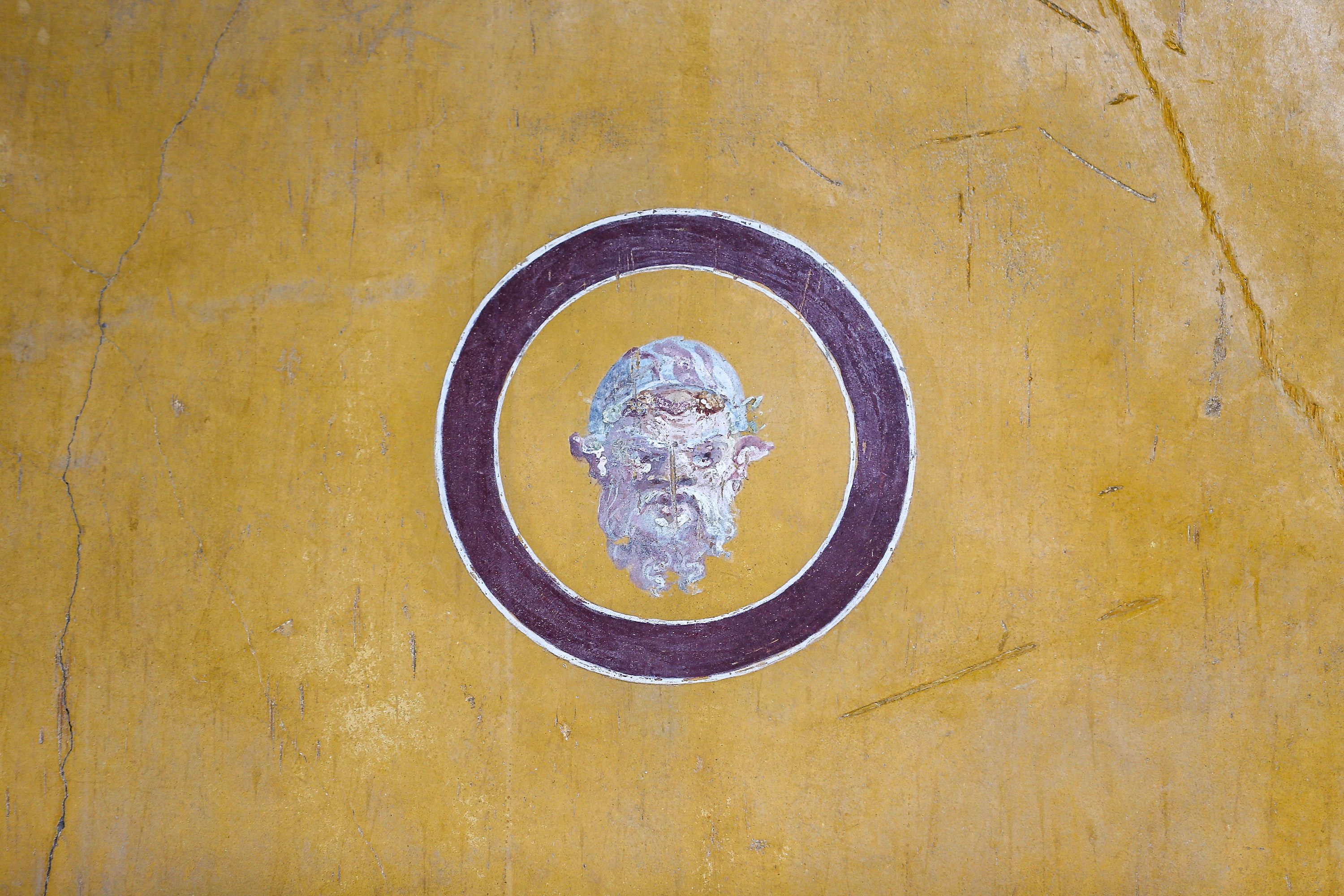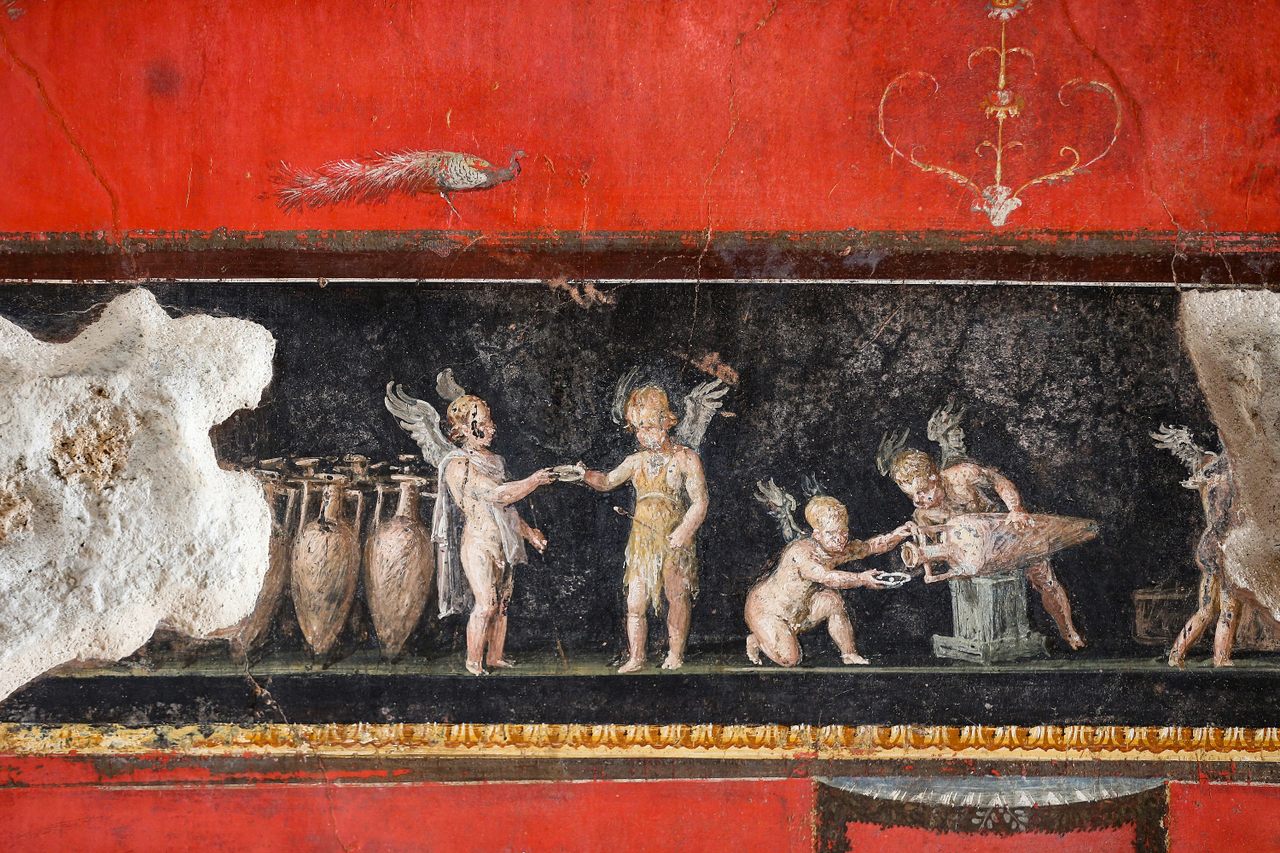Revealing the Risqué Art of Pompeii’s House of the Vettii
Inside the two-decade-long effort to restore the mansion’s colorful frescos.
The House of the Vettii is one of the most important and spectacular sites in Pompeii. Its nearly 12,000 square feet are replete with bronze and marble sculptures, and its courtyard garden once boasted 12 spurting fountains—all of them stilled by the volcanic eruption that buried the city in 79. Elaborate frescoes adorning the mansion’s walls, which depict characters and stories from mythology, have elicited careful study by archeologists, classicists and historians since the site’s excavation in the mid 1890s. And this year, after a restoration that took two decades, its treasures are newly accessible to the public, in all their colorful detail.
And we do mean colorful: Take the portrait of Priapus, the god of fertility, whose tumescent member is roughly the size of his forearm. In an apparently boastful display, he weighs it with a handheld scale against a bag of coins. Peek at the fresco of a man and woman in flagrante delicto on the wall of a small room that was used as the cook’s bedroom—or perhaps, some scholars argue, as a small brothel.
What seems titillating to us, however, was a little more prosaic to the Romans.

“It really shocks people when they see images of lovemaking on the walls,” notes Steven Tuck, a classics professor at Miami University of Ohio, who drew heavily from the House of the Vettii for his popular textbook, A History of Roman Art. “It forces us to realize that these people are not just people like us wearing togas. They have a completely different set of cultural values.”
The specific Romans who inhabited the House of the Vettii were Aulus Vettius Restitutus and Aulus Vettius Conviva, wine merchants who made their fortunes after being freed from slavery. (Though they’re often called “brothers,” it is unknown whether they were related by blood, or simply grew up as slaves in the same household.) Their path to prosperity was not an uncommon one—the House of the Vettii dates to a time when a self-made aristocracy, including many former slaves, was growing in Pompeii.
“It was certainly true that you could have an absolutely hideous life as a slave,” says David Potter, a professor of Greek and Roman history at the University of Michigan, “but there’s also a major path of social advancement, because slaves are educated in a rich person’s house.”

The Vettii, who like many Roman slaves would have been freed in their early 20s, likely lived here with their wives and families, Potter says. In Roman society, women and men socialized in the same spaces, and both genders would have experienced erotic paintings and sculptures as conversation pieces perfectly fit for polite company. Priapus symbolized male power and virility, but he was also the enemy of thieves, as well as a humorous figure that might have made guests smile.
“What you’re saying with this picture is, ‘Priapus looks after us because we’ve made a lot of money,’” Potter says. “But with the scale, it’s also a natural joke.”
Erotic art has been turning up at Pompeii since excavations began in the 18th century. At first, the naughtier pieces would be spirited off to the Gabinetto Segreto (Secret Cabinet) in Naples, away from the innocent eyes of the general public. The House of Vettii, however, was one of the first sites to be unearthed using modern archeological techniques, and its artifacts were left in situ so their context could be preserved for future scholars and the public. Which doesn’t mean the Victorian-era archeologists weren’t still scandalized by what they found. According to an 1896 edition of The English Illustrated Magazine, a House of the Vettii painting “only suitable to that barbarous period of Europe’s history [was] very properly… covered over” before the dig continued.

In addition to being a little prudish, Pompeii’s early caretakers also made some well-intentioned mistakes. To protect frescoes from the region’s heat and humidity, they painted on a solution of wax and benzine, which oxidized the pigments over time, darkening the colors and making the images far less crisp and lively than they would have appeared on the eve of the eruption.
“The wax had two effects,” says Tuck. “One is that everything looks muddy, like you’re looking at it through a scratched piece of Plexiglas. There’s volcanic dust all over Pompeii still, and it sticks to the surface of the wax and makes the paintings much harder to see.” The other problem, he explains, is less obvious but more serious: Wax doesn’t expand and contract with changes of temperature in the same way plaster does, and over time that material conflict caused cracks in the walls.
Technology, however, has come a long way. The recent restoration of the House of the Vettii involved the painstaking removal of all that dirt and wax using lasers, a process called photoablation. Ultrasound and thermal imaging helped conservators understand how the walls themselves were deteriorating with time, and how to shore them up without damaging the frescoes. The payoff, by all accounts, was worth the effort.

“The colors, the clarity—it was really wonderful,” says Tuck, who toured some of the restored rooms.
Potter, whose research has taken him to Pompeii many times, is already planning another trip, not only to see the restored House of Vettii—and Priapus in all his newly visible glory—but also to commune with the Romans through what is still the best medium we have for understanding this lost civilization.
“This work to reconstruct the city is really important,” he says, “because it lets you feel how people lived shoulder to shoulder. Here, you can really be in touch with the ancient world.”






































Follow us on Twitter to get the latest on the world's hidden wonders.
Like us on Facebook to get the latest on the world's hidden wonders.
Follow us on Twitter Like us on Facebook